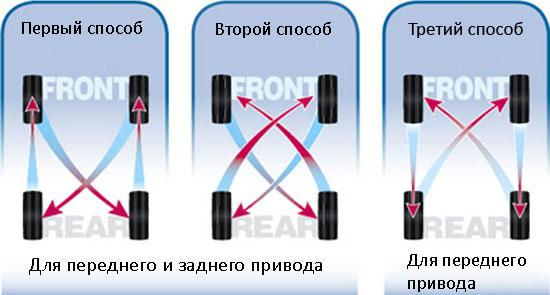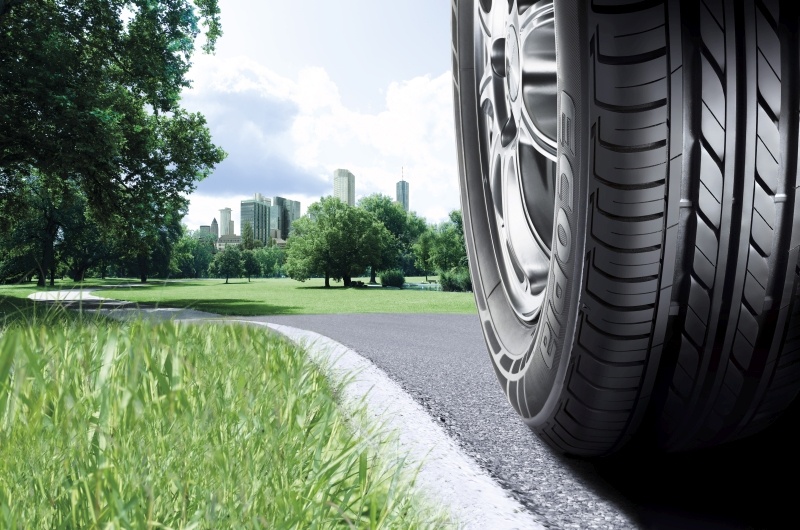
Changing tires in a car
 The type of driving, how much you use your vehicle, or the wrong pressure can cause uneven tire wear. Therefore, in addition to regularly checking the condition of the tires - tire pressure and tread depth - it is also recommended to rotate the tires periodically.
The type of driving, how much you use your vehicle, or the wrong pressure can cause uneven tire wear. Therefore, in addition to regularly checking the condition of the tires - tire pressure and tread depth - it is also recommended to rotate the tires periodically.
This is an important element of tire care, the main purpose of which is to ensure the longest possible service life.  tires and the safety of their users. What is it and how to do it? Bridgestone experts explain.
tires and the safety of their users. What is it and how to do it? Bridgestone experts explain.
As a rule, the drive axle tires, due to the fact that they are responsible for the movement of the car, wear out faster. This is due to the intensity of work that the drive axle and therefore its tires have to do compared to the tag axle. “Uneven tread depth on different axles can lead to uneven braking and steering, especially in rainy weather. When changing tire mounting locations, we do so not only to ensure a longer tire life, but also to reduce the loss of traction on the vehicle's non-drive axle,” says Michal Jan Twardowski, Technical Specialist at Bridgestone.
What to look for
Tires cannot rotate freely. All "subscriptions" must be replaced in accordance with the accepted schemes. First of all, you should pay attention to the structure of the tire tread of our car. Its structure - directional, symmetrical, asymmetric - determines the way the tires move relative to the axis and sides of the car. Bridgestone tires are engineered to a variety of tread patterns, allowing rotation as per manufacturer's recommendations, ranging from the asymmetric Ecopia EP001S, the most fuel efficient tire currently on offer from the Japanese manufacturer, to directional winter tires from the Blizzak plate tire family. tires.
Most often, tires transferred to the drive axle are changed to an additional axle. This method contributes to more uniform wear of the entire set. “If the tread is worn to the point where the tire becomes unusable, new tires must be purchased. Of course, you can replace one pair, but it is recommended to change the entire set. If you decide to buy only two tires, you should install them on a non-driven axle, as it has a greater tendency to run away in case of skidding and requires more grip, ”adds the Bridgestone expert.
Rotation methods
Symmetrical tires provide more freedom of rotation. They are commonly used in popular small to medium sized city cars, and the wider range of axle adaptation further enhances their practicality. In this case, the rotation can occur both between the axles and on the sides, as well as according to the X scheme. Directional tires set the direction of rotation, so they can only be rotated from one side of the car, without changing the direction of rolling. The directional tread pattern is best suited for winter tires due to proper water and snow evacuation. This type of tread was used by Bridgestone in the Blizzak LM-32 winter tire line to provide the best traction in winter conditions. So it's worth checking after the season to see if any of the pairs from the winter set are worn more to ensure they are rotated properly next season.
Asymmetric tires can also rotate between axles, but be aware that their tread pattern is different on the outside and inside the front of the tire. This dual structure is responsible for the balance of dry and wet performance. Therefore, when changing tires, pay attention to the Inside and Outside symbols on the tire sidewall. Asymmetric tires are becoming more and more popular, especially when fitted to vehicles with high engine power and high torque. They are also often tires for high-end sports cars - Ferraris or Aston Martins - usually factory fitted, as in the case of the Bridgestone Potenza S001 series. on 458 Italia or Rapide models.
Information on the correct sequence and rotation schedule for this vehicle can be found in the manual. Due to the lack of guidance in the car book, Bridgestone recommends replacing passenger cars every 8 to 000 miles, or sooner if we notice uneven wear. All-wheel drive tires should turn tires a little more often, even every 12 km.
The main factor influencing tire life is still the correct pressure during operation, so it is recommended to check it at least once a month. Checking the pressure can save up to several thousand kilometers of tire mileage.

